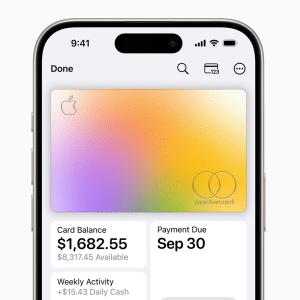These tech giants continue to shape the overall digital experience by offering unique features regarding app design, functionality, and user behavior. While Apple’s iOS tends to focus more on simplicity and an intuitive user interface, Google’s Android allows customization and flexibility across the board.
Such core differences in approaches create varied user experiences and two climates of fans. However, other industries and businesses, mainly app development and software engineering, are not only influenced by completely driven by the two operating systems. In this guide, we take a look at how the everlasting iOS vs Android narrative continues to drive app experiences and user behavior despite fierce competition. Having options is great so let us dive deeper into what makes it so appealing and why it is a good thing to have such different choices with the tech we use in our daily lives.
iOS vs. Android: Market Overview
The global smartphone market is dominated by the two and there is no question about it. Android is holding a larger share because of its availability on numerous devices and makes. iOS attracts more affluent users with higher spending power and brand loyalty as it is a premium option with premium features. Android is present on thousands of phones and tablets, iOS is only on iPhones and iPads. Emerging markets are adopting the little green robot while established markets like Western Europe and the US are sticking with the bitten-into-apple. But together, they define app market trends and cater to distinct demographics of users. Without each other, they would surely suffer and struggle to satisfy the other’s preferred fan base.
How Operating Systems Affect User Behavior and App Usage
The OS choice influences how the users engage with their favorite apps as it impacts everything they see and do, from app discovery to daily navigation. iOS users display a higher preference for high-quality apps that are curated and dedicated to the App Store. Android users are more inclined to download their apps from third-party sources and the Play Store allows them just that. With Apple, it is all in-house and exclusive while Google works with others to deliver their users what they need on their system. APp frequency, in-app purchases, and feature utilization differ considerably based on the design and ecosystem of the platforms. The divide that ensues affects how developers approach the creation of their apps because an iPhone and a Samsung user expect and want different things, or at least things that are presented and given to them differently.
Crypto Betting and Mobile Platforms: A New Era
Crypto betting has entered the worlds of gambling and sports wagering and reshaped it for the better. It is now also gaining huge momentum on both of these mobile platforms and is driven by increased interest in decentralized finance (DeFi). Integration of cryptos into mobile apps allows users to bet more securely and anonymously, which attracts a whole new generation of bettors who appreciate that modern tech cares for their well-being and safety online. Both sides are adapting to the rise of crypto betting well, introducing exciting and fun apps for the biggest online platforms and casinos, as well as sports betting. Regulatory challenges are there, but they navigate them accordingly. Overall, the user experience benefits from the seamless integration of blockchain tech and mobile interfaces which pair up nicely.

Design and Usability: How iOS and Android Shape User Interactions
Design and usability are both crucial when shaping how users interact with their devices, both in software and hardware. With apps, each OS offers a distinct approach. iOS prioritizes minimalism and promotes ease of navigation as well as streamlined user experience. Android embraces customization and allows users to tailor their interface for their version of an optimal and engaging experience. Such different philosophies impact how users engage with apps and influence overall satisfaction and adoption rates. It is also why people swear by their devices and never seem to want to change them in favor of the other.
Design Principles: Apple’s Minimalism vs. Android’s Customization
The design of Apple has always emphasized simplicity with clean lines, ample white space, and intuitive navigation elements. Functionality and effectiveness are keys to their philosophy. In contrast, Android offers everything customizable in an approach that caters to the individuality of every user. This allows them to use themes, widgets, design aesthetics, and all sorts of other features that make the system feel more personal and theirs. iOS is therefore minimalistic in style and encourages users to focus on content and core app functions. The flexibility of Google’s platform appeals to those who want personalization, creativity, and the chance to tailor their experience themselves without anyone imposing it. These differences significantly affect user interaction and engagement with apps on each system.
User Interface and User Experience
UI and UX in short, they are closely linked and each platform approaches them differently. Apple has a consistent and polished UT that aligns with its human interface guidelines. It ensures a cohesive experience across apps, platforms, and devices. Android apps are more varied in design because of their open-source nature. They come with flexible UI elements that can be changed and adapted. UI and UX approaches of the two companies directly impact how their client base perceives and interacts with mobile applications and how they perceive the online world.
App Store Approval and User Expectations
Similar differences exist with approval for apps on iOS and Android. It differs significantly as Apple has a more strict and centralized review process. Their platform often has higher expectations for app quality and security due to their procedures and philosophy. Android’s approval process is much less rigid and leads to a wider range of apps with potential inconsistencies in quality and availability. Such disparity in app approval processes shapes the user experience considerably. Simply put, iPhone and iPad users expect their apps to be more polished and secure while Samsung and other Android users simply want variety and customization, as well as more choices.

Performance and Security: iOS vs. Android in Action
Both performance and security are top priorities for all users. iOS and Android approach them differently but ultimately they care for them all the same. iOS is famous for its smooth performance and optimized devices. They ensure consistency and reliability anytime, anywhere, and swear by this sentiment. Android has a wider variety of devices which results in variable app performance depending on hardware and system version. Both platforms have advanced security features but it is Apple that is often regarded as the more secure option because it is a closed ecosystem with stricter app reviews. They do not allow that many open-source, third-party solutions so there is no risk of danger.
Speed, Stability, and App Performance
Apple devices are praised for their smooth performances and tight integration between hardware and software. They have achieved a level of uniformity on their devices that makes iOS use easy. Apps run consistently, regardless of the model. With Android, this is not possible across the board because the hardware of devices is vastly more diverse. As such, software and its apps run differently between flagship models and entry-level devices. Performance issues are more common on Android, but not with every phone or tablet and not with all hardware combinations. Still, recent advancements in optimization have helped improve stability even with the weakest of devices that are known not to offer much computing power and features.
Security Protocols and Privacy Considerations
These key concerns are also understood differently, yet the goal is the same in both companies. Platforms differ in how they handle the issues with iOS often seen as the more secure choice. Again, its closed ecosystem is a huge advantage. It has regular updates and a stringent app review process that minimizes malicious software. Android has more customization and choice with security, which of course introduces more security risks. Users are allowed to install apps from third-party sources which are not always checked as much as they should be. Both platforms have made strides in privacy protections, but control and transparency to users differ and need to be updated soon. Data is after all the most valuable resource these days.
Impact on Crypto Sports Betting Apps
The increased performance and security of iOS and Android have a huge impact on crypto sports betting apps that rely on fast and secure transactions. iOS has a more controlled environment that ensures betting apps adhere to higher standards. This appeals to users concerned about their personal and financial privacy. The openness of Android allows more people to join in and be a part of crypto sports betting. The larger market is a huge incentive for providers and operators because more people have Androids than iPhones. Blockchain technologies and crypto wallets are more easily introduced as things are more flexible on this system, but there are slightly more security challenges. Both platforms are adapting to the growing demand for crypto trading and betting, and their unique features influence user trust and app functionality.

Market and Ecosystem: The Impact on User Behavior
App discovery and long-term usage are two of the biggest consequences of user behavior. iOS users engage more with premium content and make in-app purchases or subscriptions. Android users opt for more free-to-use options because of the broader reach in diverse markets, hence more options that are not exclusive or premium. App stores play significant roles in shaping these behaviors. iOS prioritizes high-quality, curated apps and Android offers a wider array of choices. This impacts the type of apps that are successful on each platform and shapes the behavior of developers and users.
Finding the Best Sports Betting Operator on Both
Regardless of what platform you are on, you will need a trusty and high-quality sports betting operator. If you are concerned with safety, transaction speeds, and whether or not your platform of choice allows cryptocurrency transactions, your search ends here. Bety.com has all of this and more. With over 80 sports to bet on and numerous other gambling and betting options, it is perfect for both iOS and Android users. It supports all the major cryptos, has great odds across all sports, and even offers esports. If you are a fan of online casino games, you can play them too. Check them out, register, and start betting on your favorite sports events today right on your mobile device.

The Developer’s Challenge: Building for iOS and Android
Building new apps is not easy and despite IT being a huge industry, it is a challenge to build apps for modern iOS and Android varieties. Developers have unique challenges when doing it for both platforms because of the distinct features and infrastructure. Oftentimes, it is a completely different thing to make an app for each of these platforms. iOS development is constrained by Apple’s strict guidelines and uniform hardware. Android offers more flexibility but there is always the complexity of supporting a very diverse range of devices. Developers have to balance design, functionality, and performance to ensure apps perform optimally on both platforms.
App Development Tools and Languages: Functionality and Design
iOS development relies heavily on Swift and Objective-C. It utilizes Apple’s Xcode integrated development environment (IDE). Android developers typically use Java or Jotlin with Android Studio for the creation of new apps. Naturally, it is difficult and time-consuming to do both at the same time. The choice of tools and languages is vital for ensuring compatibility and performance without issues. Security on each platform is also crucial and requires form the developers to be proficient in both ecosystems to cater to the entire audience. Balancing functionality and design across iOS and Android is not easy and requires developers to make trade-offs between platform-specific features and experiences. iOS apps prioritize simplicity and uniforms ensign, while Android is all about flexibility and customization. Some apps simply cannot have both so developers must ensure the app functions correctly on both despite differences in screen sizes, hardware, and system behaviors.
Monetization Strategies and Market Reach
The monetization strategies that Apple and Google employ are different. Developers usually earn more per user on iOS because of a tight-knit fan base. They make more in-app purchases and subscribe more easily, so subscription services are a gold mine. Android has a wider market reach that allows developers to focus on ad-based revenue and freemium apps to generate income. Differences in user spending and platform demographics influence how developers approach pricing, advertising, and app purchases, too.









